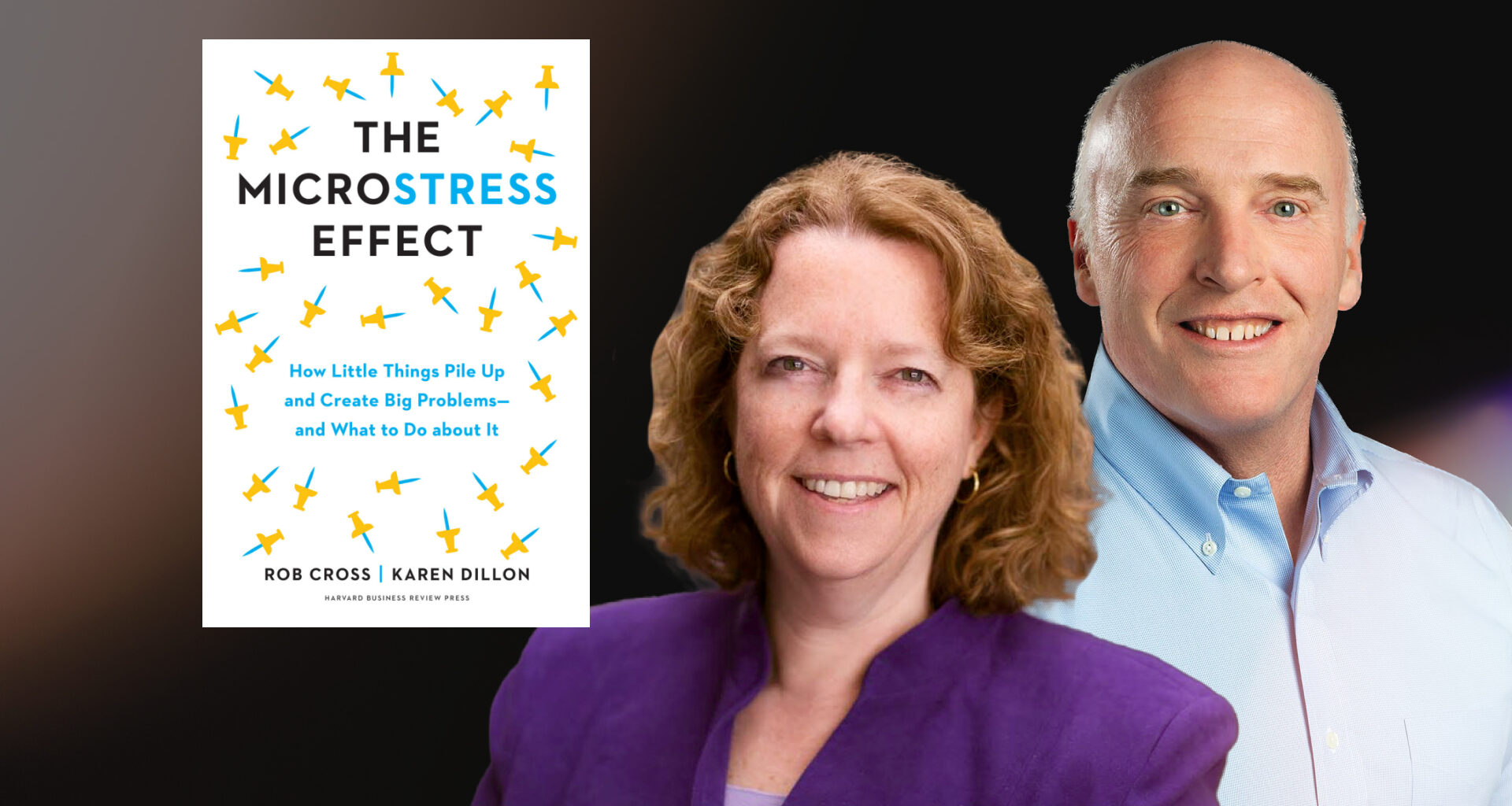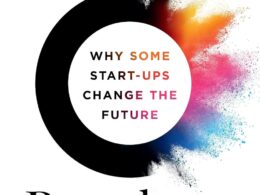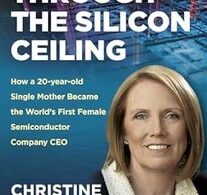The following is a Q&A with Rob Cross and Karen Dillon, coauthors of “The Microstress Effect: How Little Things Pile Up and Create Big Problems—and What to Do about It“
How did the idea of “microstress” come about for this book?
In the course of doing a series of interviews with high achievers about the practices that allow them to be effective collaborators, we stumbled onto something surprising. Because they had been identified by their organizations as high performers, we expected them all to be sailing through life more easily than the rest of us. That’s not what we found. Many of them were powder kegs of stress. But most of them didn’t recognize it.
During our interviews, many choked up or broke down into tears, lamenting that they couldn’t see a path out of feeling like they were just barely holding it all together. We were familiar with the kind of recognizable stress that high performers can endure to achieve their professional goals. But this was something completely different. It was stress, but in a form that neither they—or we—had the language to articulate.
What became clear as we talked is that it was never one big thing that led people to the feeling of being overwhelmed. Rather it was a relentless accumulation of unnoticed small stresses, in passing moments, that was so drastically affecting the well-being of these people who otherwise appeared to “have it all.” So we started to call it microstress and began to take a deep dive into understanding where it comes from, how it affects us, and what we can do about it.
What did you learn while researching?
We were floored by the overall impact of microstress. Each individual microstress sounds very manageable – maybe you sense a misalignment on a project with your colleagues or you have an uncomfortable conversation with a direct report trying to coach him how to master something that he’s still struggling with, or even getting a vaguely worrying text from your teen while you’re in a meeting at work that later turns out to be nothing—but cumulatively they stack up and take an enormous toll.
Microstress is sneaky – it’s baked into everyday interactions in a way that is so brief we barely remember them, but the toll microstress take on us (and those around us) lingers for hours or even days. We felt that if these high performers were struggling with microstress, what hope is there for the rest of us!
What can a budding entrepreneur learn?
I think budding entrepreneurs should pay attention to what the people who manage microstress do better than the rest of us. We started calling those people the Ten Percenters in our research. But as an entrepreneur, you are likely to go “all in” on dream. But that can cause you to become one-dimensional – work (and maybe family) is the only place you invest your time and energy because you don’t allow yourself time for anything else.
The Ten Percenters were able to build and maintain what we call “multi-dimensional lives”, where other activities and shared interests were part of their lives. They found time, even in small moments, to build authentic connections with others. This can be as simple as making a point of being out in your yard on the weekends so you can have spontaneous conversations with neighbors, but it can also be reaching back into a passion from your past and finding new ways to connect with others to do that.
One well-regarded neurosurgeon in our research delighted in joining a casual weekend band in his hometown where he was 20 years older than everybody else. Just being around different people for a shared activity you care about can add fresh perspective to your life. That that dimensionality is a key to not letting microstress grind you to a nub.
Sign Up for The Start: A Newsletter Built for Entrepreneurs
Was there one interview in particular with the “high achievers” that stood out?
The Ten Percenter stories are the ones that are most memorable because they were rare – people who were able to manage and mitigate the microstress in their lives better than the rest of us.
One of our favorites is a high performer named Chris who has clearly excelled in his career while still making time for a rich, multi-dimensional life. He does this, in part, by setting out very clear life goals for himself, which involved setting priorities in a variety of spheres of life that matter to him and his wife. And then he journals every week to make sure he’s staying true to those priorities. He holds himself accountable. One of his secrets, he told us, is to work hard at “respectful Nos” so he has time for “spontaneous, enthusiastic Yeses.”
His multi-dimensional life is as important to him as any career goal, but having that, in part, has helped him be so successful professionally, too, because microstress does not grind him down.
Level Up Your Digital Skills: Free This Week with Verizon Small Business
How does microstress relate to our work lives? How does it differ from our personal lives?
We all accept that we now live in a hyperconnected 24-7 world with everyone being a simple text, call or video-chat away — in every realm of our lives. We must be “on call” to people in both our personal and professional lives around the clock. But what you might fail to recognize is how these connections trigger an avalanche of microstress that extends far beyond a lengthy to-do list or full calendar. We can’t simply shake it off at the end of the day. Microstress seeps into our thoughts, saps our energy, and diverts our focus. We simply can’t be our best selves at work because we’re always responding to microstress, rather than finding ways to proactively shape the way we work.
The microstress that comes from our families or close friends may be even more draining because there are layers of emotional complications, too. When we care about the people who are causing us microstress, it makes the impact even greater. And even when they’re people we don’t like, we still have emotional complexity in response.
Rob Cross is a professor at Babson College and cofounder and research director of the Connected Commons, a consortium of over 100 leading organizations accelerating network research and practice. Karen Dillon is a former editor of Harvard Business Review. “The Microstress Effect: How Little Things Pile Up and Create Big Problems—and What to Do about It” is available on Amazon.






